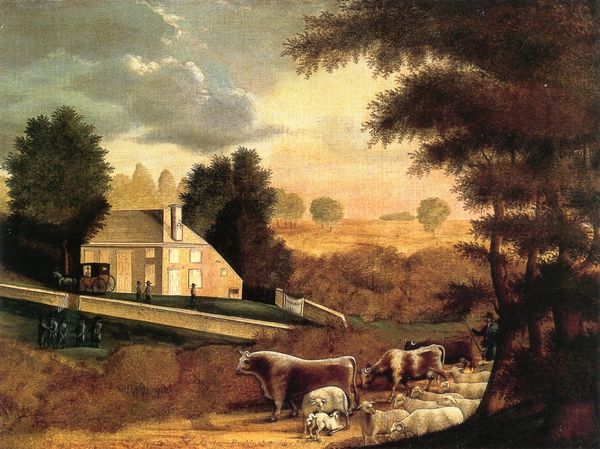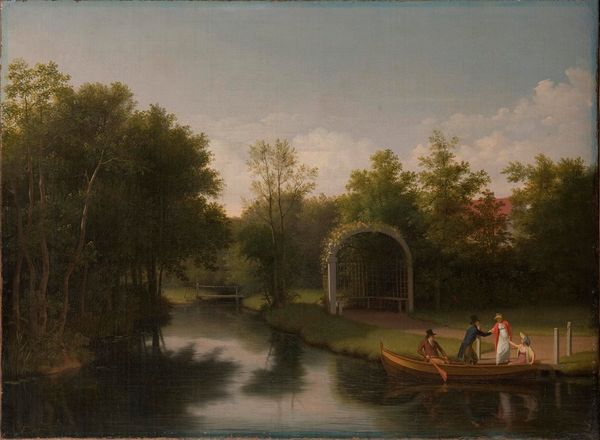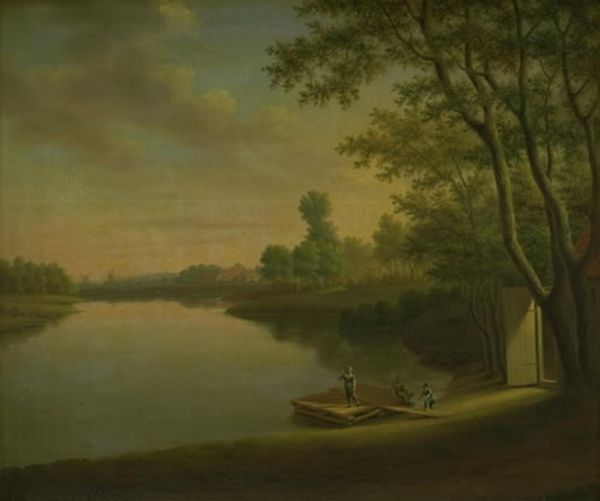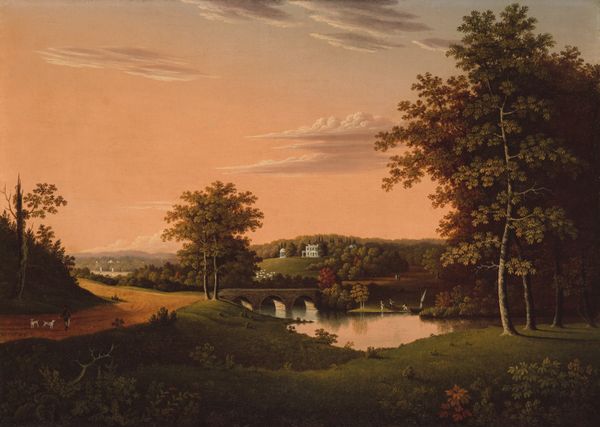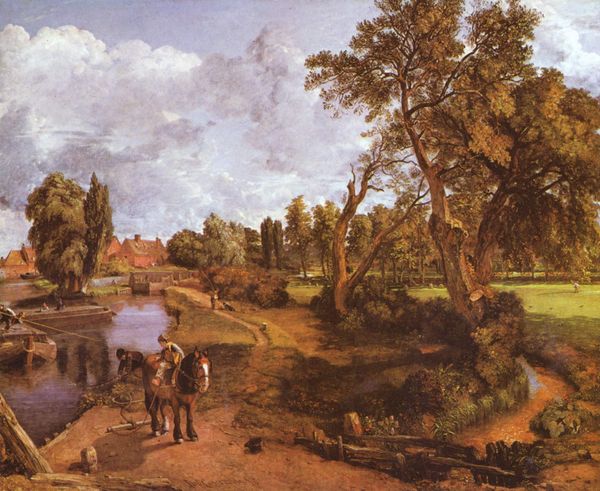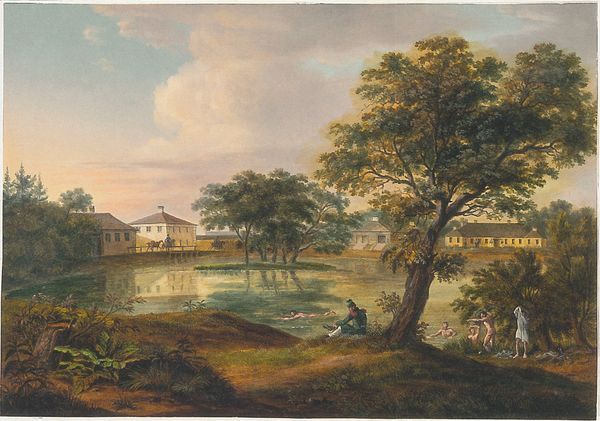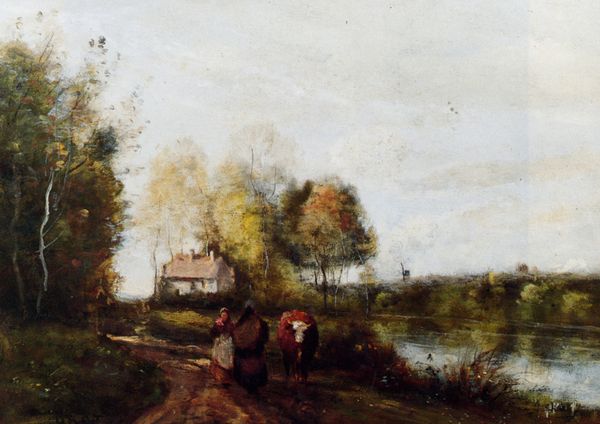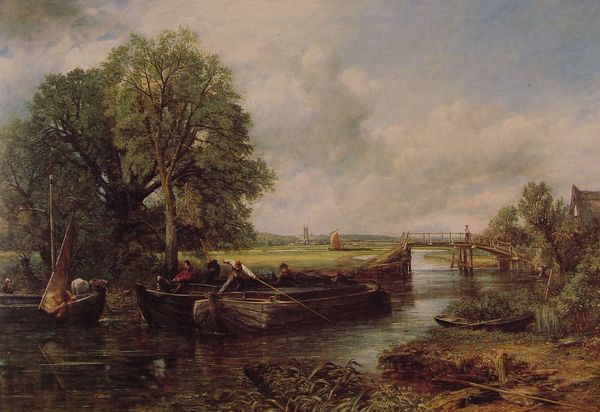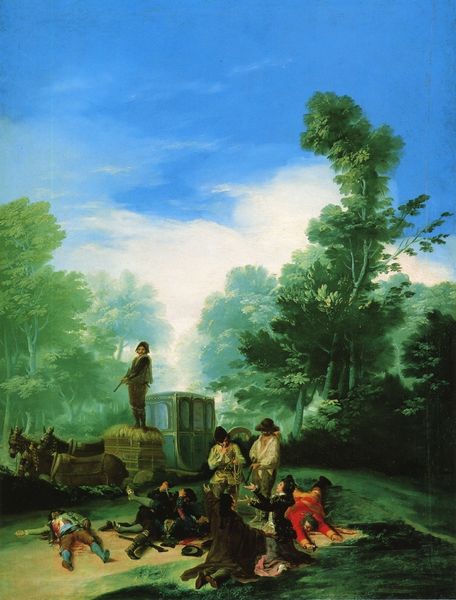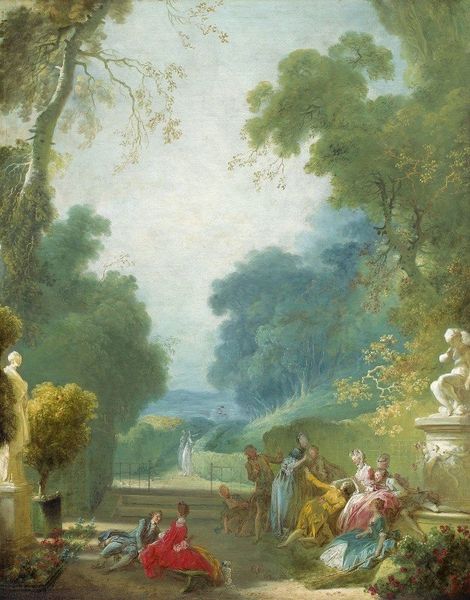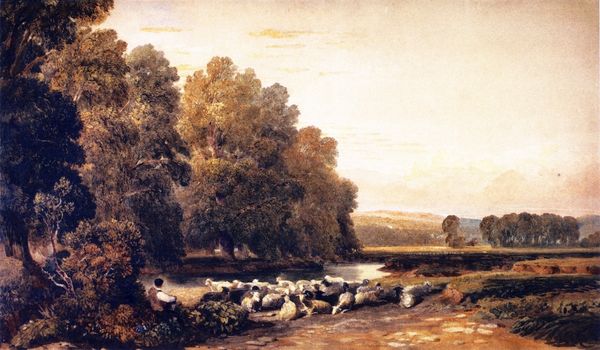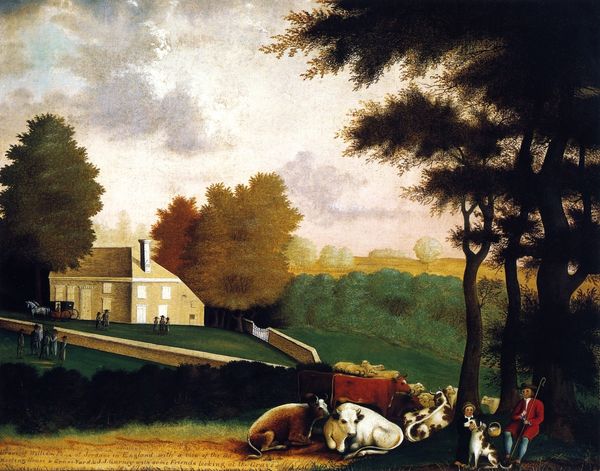
Dimensions: support: 356 x 446 mm frame: 465 x 552 x 70 mm
Copyright: CC-BY-NC-ND 4.0 DEED, Photo: Tate
Editor: Here we have James Pollard's "Fly Fishing in the River Lee near the Ferry Boat Inn." It's an oil on canvas, depicting a leisure scene. What sociopolitical commentary do you observe in this piece? Curator: Well, consider the figures. Who has the luxury of leisure? This scene, though seemingly benign, reflects a specific class enjoying the fruits of industrial labor. The river, perhaps polluted downstream, becomes a site of recreation solely for the privileged. What do you think that signals? Editor: It does seem to highlight the unequal distribution of resources and the impact of industrialization on different social strata. Curator: Precisely. This idyllic image masks the underlying tensions of class and access, a common thread throughout much of 19th-century landscape painting. It prompts us to question whose stories are being told and whose are being left out. Editor: That gives me a lot to think about. Thanks for that insightful perspective. Curator: My pleasure. Art always has more to say.
Comments
tate 7 months ago
⋮
http://www.tate.org.uk/art/artworks/pollard-fly-fishing-in-the-river-lee-near-the-ferry-boat-inn-t03436
Join the conversation
Join millions of artists and users on Artera today and experience the ultimate creative platform.
tate 7 months ago
⋮
Pollard was himself a keen angler and painted several small pictures on the theme. This charming scene forms a pair with 'Trolling for Pike in the River Lee', also in the Tate collection. The locations for many of these fishing subjects were on the outskirts of London; this view shows the Ferry Boat Inn at Lea Bridge near Clapton, which still stands today.The improvements in tackle and the stocking of rivers and ponds had enabled fishing to become a popular recreation amongst the middle classes during the early nineteenth century. However, it was a subject only occasionally portrayed by artists, for the vast majority of patrons demanded equestrian sporting scenes. Gallery label, April 1995

